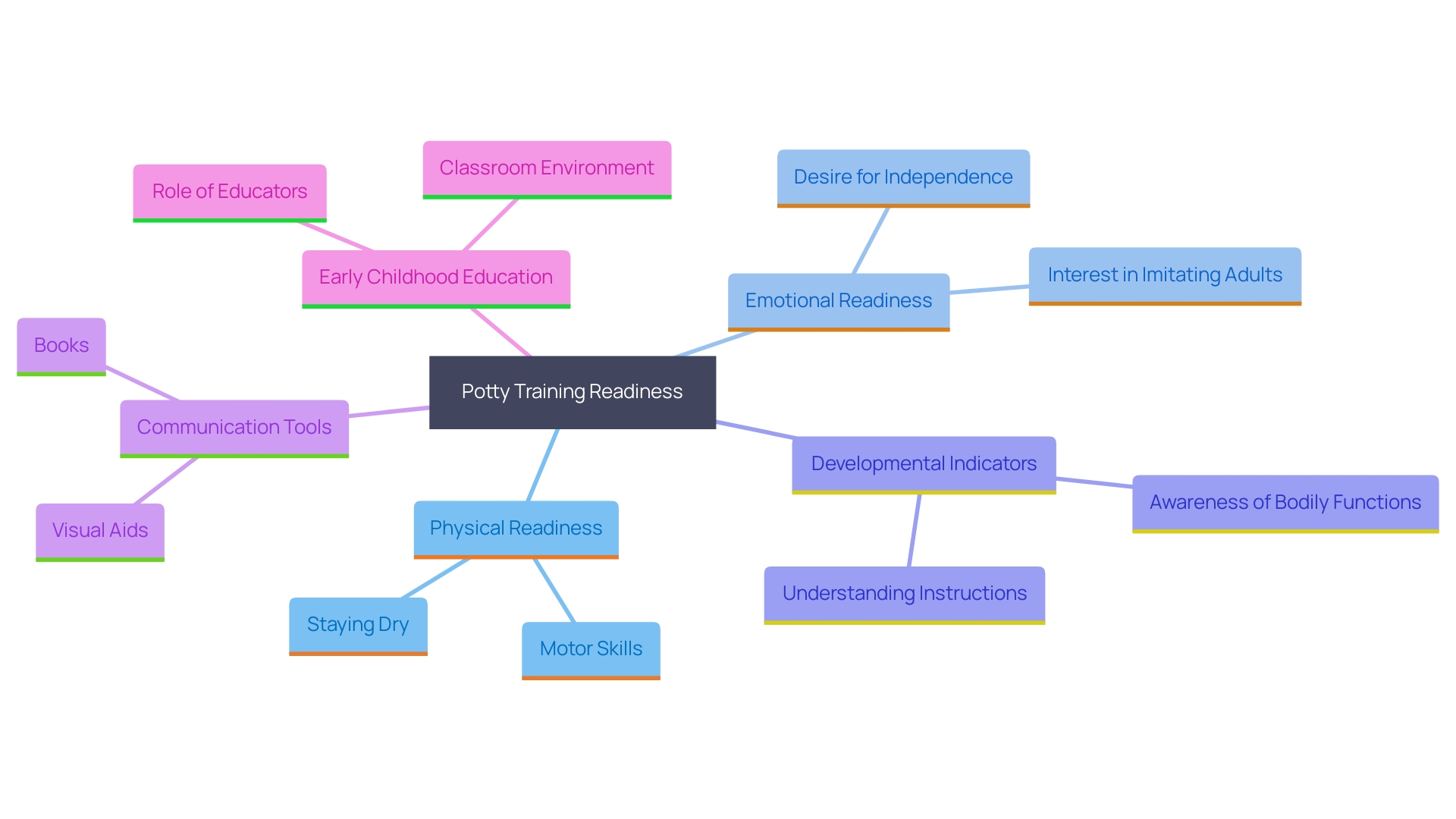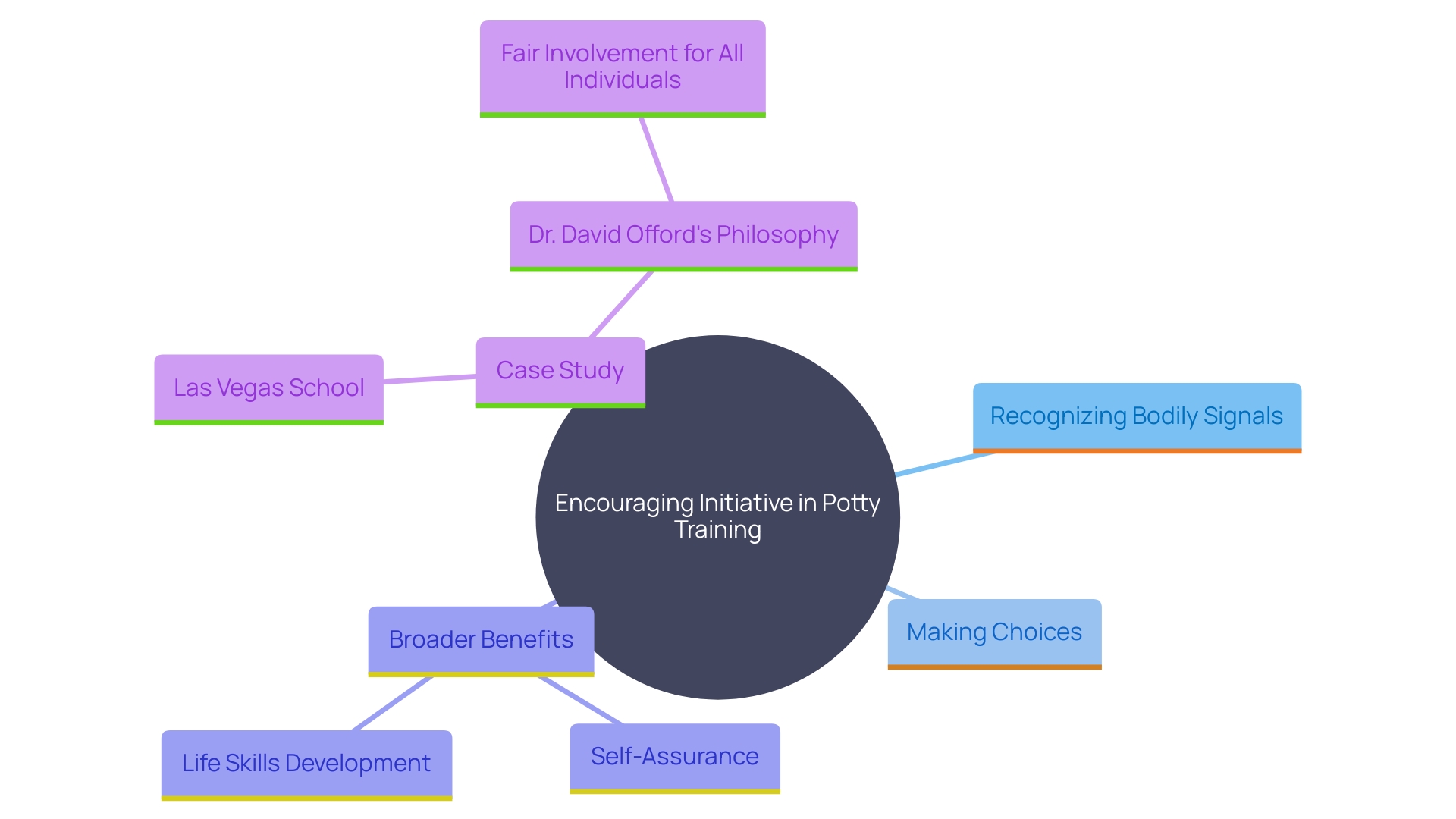Introduction
Potty training is a significant milestone in a child's development, often laden with both excitement and challenges, especially for parents of children with developmental disabilities. This comprehensive guide delves into the crucial aspects of potty training, offering practical strategies and insights to ensure a smooth transition for your child. From assessing readiness and preparing an optimal environment to employing visual cues and handling accidents with grace, each section is designed to empower parents with the knowledge and tools needed for success.
By fostering independence and providing consistent support, this article aims to turn the potty training journey into a positive and confidence-building experience for both the child and the parent.
Determining Readiness for Potty Training
Before starting the intensive three-day potty training journey, it's essential to evaluate the readiness of your little one both physically and emotionally. This process isn't just about the ability to stay dry for longer periods or showing interest in using the toilet—it's about ensuring that the young one is in the right developmental stage to tackle this milestone.
Look for key indicators such as your offspring's ability to understand and follow simple instructions, their interest in imitating adult behaviors, and their ability to communicate their needs. These signs reflect a young person's neuropsychomotor readiness, a crucial aspect of their overall development. Remember, each young individual is unique, and their early experiences play a significant role in their readiness for new challenges. For instance, early childhood education has been shown to extend benefits beyond development, influencing the family and society by reducing social exclusion and increasing family income.
Including communication tools and granting additional time for your kid to understand information can also be helpful. Tools like Makaton or the Picture Exchange Communication System can enhance understanding and make the process smoother. As Nordahl's research at the MIND Institute highlights, adapting approaches to meet the needs of young individuals with varying communication abilities can lead to significant advancements in their developmental journeys.
By acknowledging and valuing your little one’s distinct speed and preparedness, you create the conditions for a successful and encouraging bathroom learning experience.

Preparing the Environment for Success
Create a calming and captivating toilet training space. Choose a toilet or potty chair suitable for kids that is easily reachable for your little one. Ensure the space is free from distractions and well-equipped with essentials like wipes and a step stool. Establishing a tranquil and orderly setting can greatly alleviate sensory overload, making the experience less intimidating for individuals with autism. This setup not only fosters independence but also boosts your youngster's confidence and sense of security.
Using Visual Cues and Communication Strategies
Integrate visual aids, such as charts or pictures, to help your little one grasp the steps of using the toilet. By using clear and consistent language, you can communicate the process effectively, reinforcing positive behaviors. A structured and engaging approach not only helps your little one actively engage in potty training but also builds their confidence and independence. Dr. Temple Grandin emphasizes creating productive learning environments for young individuals with autism by considering sensory sensitivities, such as using non-flickering LED lights. Consistent monitoring and goal setting, akin to the strategies used by Board Certified Behavior Analysts (BCBAs), are crucial for ensuring progress. Research by experts such as Dr. Lindsey Pike and Dr. Adam Moore emphasizes the significance of personalized, supportive strategies for youth with developmental disabilities, further highlighting the necessity for family engagement and adaptability in methods. Whether it's through structured routines or innovative visual aids, empowering your little one in their potty training journey can lead to significant developmental gains.
Handling Accidents and Positive Practice
Accidents are a normal part of the learning process. When they happen, respond calmly and reassuringly. Encourage your offspring to try again without shame. Celebrate small successes to build their motivation and confidence. Positive reinforcement will create a supportive atmosphere that fosters learning. Model perseverance by sharing your own experiences with overcoming obstacles. Demonstrating to your offspring that everyone, even grown-ups, encounters difficulties can be a powerful message. Focus on tracking progress together to highlight what’s working and adjust plans as needed. This method not only fosters resilience but also enhances the connection between you and your offspring. Remember, the goal is to create an environment where your young one feels supported and confident in their journey.
Encouraging Independence and Initiation
Encouraging your little one to take initiative is a pivotal step in the potty training process. Allow them to recognize their own bodily signals and make choices about when to use the toilet. This independence fosters a sense of control and investment in their success. A case study from a Las Vegas school demonstrated how students, even those in special education, thrived when given the opportunity to manage tasks independently, such as feeding pets and preparing meals. This method not only fosters self-assurance but also corresponds with Dr. David Offord's philosophy, highlighting the significance of fair involvement and assistance for all individuals, including those with disabilities. By empowering your child to make these decisions, you are helping them develop crucial life skills and enhancing their overall well-being.

Tips for Nighttime Training and Regression
Nighttime potty instruction often requires more time and patience compared to daytime methods. To facilitate this process, consider strategies such as reducing fluid intake before bedtime and utilizing waterproof mattress covers to manage accidents. It’s important to remain patient and supportive if regressions occur, recognizing that changes in routine or stressors can impact progress. Strengthen the abilities your offspring has already excelled in, and make certain they feel backed and comprehended during the instruction. For some children, especially those with enuresis, tools like wetting alarms or innovative solutions such as the SENS-U bladder sensor can provide additional support, alerting them before accidents happen, thus promoting a more seamless nighttime training experience.
Conclusion
Potty training is a pivotal milestone that presents unique challenges and opportunities, particularly for children with developmental disabilities. Assessing a child's readiness is crucial, as it encompasses not only physical capabilities but also emotional and communicative aspects. By recognizing the signs of readiness and incorporating supportive tools, parents can create an environment conducive to success.
The importance of a well-prepared environment cannot be overstated. A calming and organized potty training area fosters independence and confidence, enabling children to navigate this new experience with greater ease. Utilizing visual cues and communication strategies further enhances understanding, allowing children to engage actively in the process while building essential life skills.
Handling accidents with a positive and reassuring approach promotes resilience and strengthens the parent-child bond. Celebrating small successes and encouraging initiative empowers children, instilling a sense of control over their potty training journey. Moreover, addressing nighttime training with patience and appropriate strategies ensures a comprehensive approach to this significant developmental phase.
Ultimately, the journey of potty training, when approached with understanding and support, can lead to lasting developmental gains and a sense of accomplishment for both children and their parents. By fostering an environment of encouragement and independence, parents play a vital role in guiding their children through this important transition.




